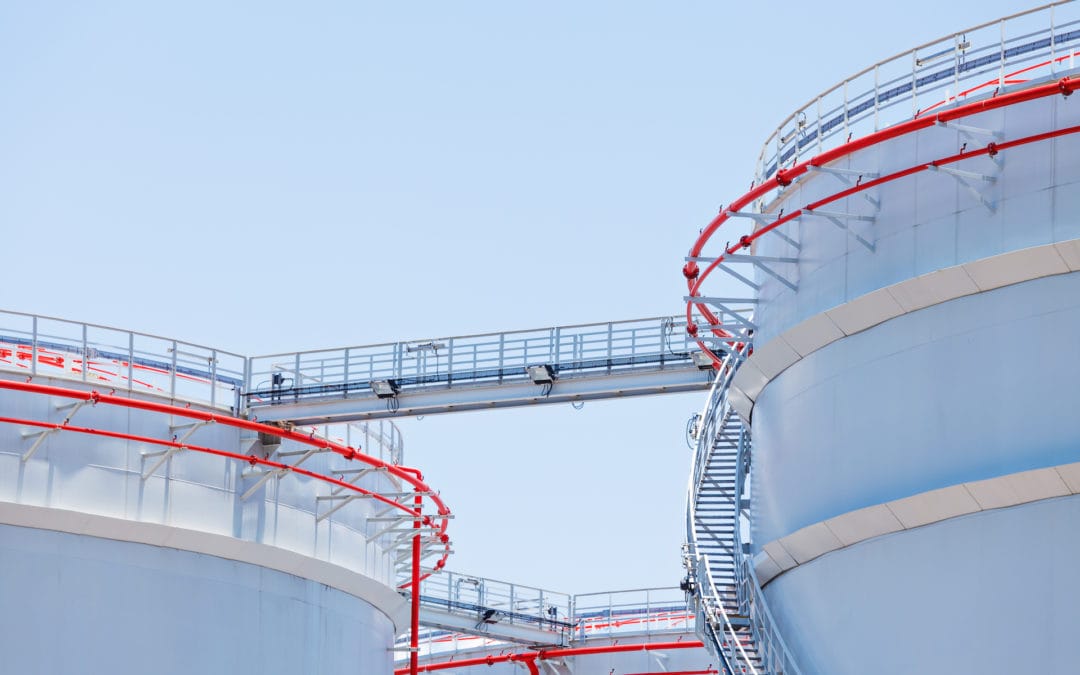You understand the importance of having your storage tanks inspected, but do you know which inspection is right for you? Despite what you may have heard, the two main methods—API 653 and STI SP001—are very different. Choosing the wrong inspection could miss critical problems and cost you money.
It’s not an obvious choice to make. The most expensive option may not cover all the necessary points for your specific tanks, but a comprehensive inspection may cover areas irrelevant to your installations. Thankfully, learning the difference is as simple as knowing your tank.
In this post, we’ve outlined how STI SP001 inspections and API 653 inspections differ and what style of tanks they apply to. If you’re unsure what make your tank is, we’ve included some tips to help you identify it. Read on to learn what inspection is right for your business.
The API 653 Standard
The American Petroleum Institute (or API) 653 inspection standard is commonly used because of its versatility. It applies to above-ground storage tanks built to the API 650 and 12C standards. However, it’s found use in inspecting tanks built to earlier, unknown standards as well.
API 653 inspections focus on preventive maintenance. Through physical, non-damaging tests and visual inspections, inspectors can identify components that need repair, are wearing down, or no longer function. Inspectors look specifically at a tank’s roof, foundation, shell, attached structures, and nozzles (including joints).
There are two types of API 653 inspections that require professionals to perform: exterior and internal. Exterior inspections should take place every five years. Internal inspections depend on the corrosion rate (determined by an inspector) and can occur anywhere between ten and thirty years.
The cost of this inspection varies more than its SPI counterpart because it can apply to more tanks and configurations. However, estimates range between three thousand and six thousand dollars on average.
SP001 Inspection
Compared to API 653, the SP001 inspection standard is more specific. It’s focused on preventive maintenance like its counterpart but includes different tests. In addition, it applies to above-ground storage tanks (including shop-fabricated tanks) as well as portable containers.
SP001 inspections look at these components:
- The thickness of the primary tank and any secondary tanks
- The tank’s foundation, including supports
- Release prevention barriers, including standard and emergency vents
- Tank valves and piping
- Spill control mechanisms
- All alarm systems
Rather than assess if a tank meets minimum safety requirements, SP001 approaches tank safety from every possible angle. For example, identifying wear in the early stages can draw attention to developing problems before they become more complex and expensive to handle.
How frequently your tank needs an SP001 inspection depends on what category it falls under. There are three categories for this standard:
- Category 1: Tanks with spill control and continuous release detection method (CRDM) in place
- Category 2: Tanks with spill control but lacking CRDM
- Category 3: Tanks lacking both spill control and CRDM
These categories define the risk potential for leaks and other problems. Category 1 holds the least risk, while 3 contains the most. The more risk potential a tank has, the more frequently it needs professional inspection.
Inspection frequency also depends on the make and model of the tank. A shop-fabricated tank may require an inspection once every five or ten years. Portable containers vary depending on their material:
- Every seven years for plastic
- Every twelve years for steel
- Every seventeen years for stainless steel
Identifying Your Tank
In most cases, identifying the standard of your tank is easy. For example, an STI SP001 standard covers small field-erected tanks and shop-fabricated tanks. API 653 standard covers tanks built to the API 650 and API 12C standards.
Sometimes making these identifications isn’t easy. Adding to the confusion is that there can be overlap between the two. To make things easier, follow these tips.
Measure your tank. The SP001 standard covers above-ground storage tanks up to fifty feet tall and thirty feet diameter. Their shell thickness is less than one-half of an inch.
Look for a manufacturer’s plate. Shop-manufactured tanks made after a particular year feature a steel plate that includes (among other things) standard information. You can usually find manufacturers’ plates on the side of a tank.
For above-ground storage tanks, look at the capacity. API 653 standard tanks have a capacity higher than seventy-five thousand. They are also taller and wider than SP001 standard tanks.
Look at the tank’s construction. If it’s welded or features rivets, it’s like API 653 standard. Some (but not all) SP001 tanks feature a concrete shell.
If you’re still unable to identify a tank, you should consult your purchase records. Depending on the tank’s age, these records will determine the standard. If it isn’t listed as API 653 or STI SP001, a professional tank technician can clarify if it falls under either standard.
Hire a Certified STI & API Tank Inspection Professional
We are only as good as the service we provide, and we go the extra mile to ensure all of our personnel are trained to industry standards.
At NDT Tanknicians, we embrace the tough challenge set in place to be certified by entities such as the Environmental Protection Agency (EPA,) American Petroleum Institute (API,) Steel Tank Institute (STI,) American Society for Nondestructive Testing (ASNT,) and the National Association of Corrosion Engineers (NACE,) to name a few.
We’re capable of providing top-to-bottom coverage for all of your Storage Tank requirements; servicing a broad spectrum of clientele, both small and large. Our ability to streamline an entire project gives us an edge over the competition by providing our clients with the peace of mind and convenience of trusting one service provider to become familiar with all of their current and future needs, rather than half a dozen. This keeps costs to a minimum, quality control consistent and communication among crews seamless. Request a quote today.


Recent Comments